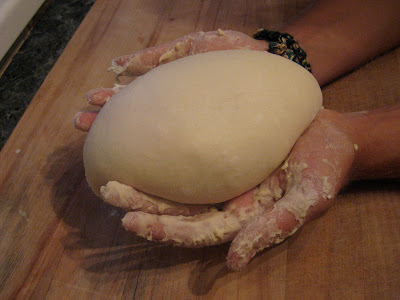This is what the end product looks like! Amazing hearty bread, baked in a pot!
I mostly bake bread by shaping the dough into a loaf and then sliding it onto a hot baking tray in the oven. However, I've been wanting to try the pot technique for a while now and honestly, it's one of the easiest ways to bake bread. If you're somebody who doesn't want to do the whole shaping and proving part of homemade bread, and you just want to get the prep done as quickly as possible then this technique is for you. It is also a good technique to use for certain breads that don't rise as much as others, like soda breads or bread made with wholegrain or wholemeal flour. I used Einkorn Wholgrain flour, which makes a fantastic tasing rustic bread, perfect for soups and stews, and anything else frankly! Einkorn is a wheat variety that apparently outdates any other cultivated wheat variety used today. It's a grain with a lot of history and is speculated to have been developed over 20.000 years ago when humans started cultivating wheat. You could say then that this is the original wheat and when you eat this bread you're experiencing a taste that people experienced thousands of years ago.
For more information on Einkorn flour and the history of bread check out the Doves Farm website:
http://www.dovesfarm.co.uk/about/types-of-grain/einkorn-grain/
The reason I used Einkorn flour was not only because of its strong rustic flavour which compliments the crude but simple pot technique. I mainly used this flour because it doesn't rise as well as other types of flour, and so letting it prove in a pot is a lot easier and straightforward because the pot holds the shape of the loaf. Also, when you bake bread in a pot the crust gets really thick and crispy and this works brilliantly with Einkorn flour.
So how did I make my bread? I first made a sponge using 150 g of Einkorn flour mixed with 350 ml lukewarm water and a teaspoon of dried yeast. The idea behind a sponge is that you use some of the flour for your bread, I usually use 150 g out of 500 g, and then use all of the required water for the recipe and some yeast.
You let this stand in a warm place and cover it with a kitchen cloth for about half an hour. This allows the yeast to get a good headstart and to develop a strong yeasty flavour which works well with wholegrain flour. When the sponge has been fermenting and bubbling as you can see in the picture, add the rest of the flour, another teaspoon of yeast and a heaped teaspoon of salt. The extra yeast will give the dough the needed kick to rise better in the oven. You then just need to kneed the dough for 5 minutes, flour it and shape it into a round ball to put it into an ovenproof pot. The bread was proving for another 30 minutes in the oven at a very low temperature of 50 °C and then I increased the temperature to 220 °C and let it bake for 20 minutes. After that I took the bread out of the pot, put it onto a cooling rack for 10 minutes and then it was time to get stuck in!







